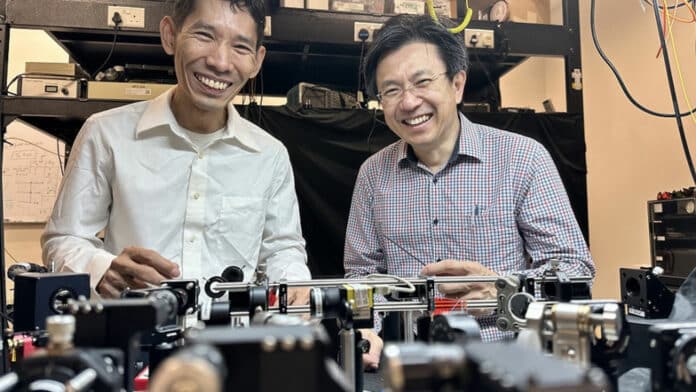Examining the various individual properties of a large everyday object is fairly simple. However, this becomes much trickier when examining microscopic quantum objects like photons – tiny little light particles.
This is thus because measurements of one property might create disturbances of other properties since some properties of quantum objects are related. For instance, monitoring an electron’s position will change its speed and vice versa.
Such properties are called conjugate properties. This is a direct manifestation of Heisenberg’s famous uncertainty principle- it is impossible to simultaneously measure two conjugate properties of a quantum object with arbitrary accuracy.
Scientists at The Australian National University (ANU) have developed a method for measuring small things more accurately using quantum computers. This technique could benefit various future technologies, including biological sensing.
ANU Ph.D. researcher Lorcán Conlon said, “We were able to design a measurement to determine conjugate properties of quantum objects more accurately. Remarkably, our collaborators were able to implement this measurement in various labs around the world.”
“More accurate measurements are crucial and can, in turn, open up new possibilities for all sorts of technologies, including biomedical sensing, laser ranging, and quantum communications.”
The novel method is based on entanglement, a peculiar property of quantum systems. Scientists noted that monitoring two identical quantum objects when entangled allows for more exact property determination than measuring them separately.
Co-author Dr. Syed Assad said, “By entangling two identical quantum systems, we can acquire more information. There is some unavoidable noise associated with measuring any property of a quantum system. We can reduce this noise by entangling the two and get a more accurate measurement.”
According to Professor Ping Koy Lam, A*STAR chief quantum scientist at the Institute of Materials Research and Engineering (IMRE), one of the key strengths of this work is that a quantum enhancement can still be observed in noisy scenarios.
“For practical applications, such as in biomedical measurements, it is important that we can see an advantage even when the signal is inevitably embedded in a noisy real-world environment.”
Journal Reference:
- Conlon, L.O., Vogl, T., Marciniak, C.D. et al. Approaching optimal entangling collective measurements on quantum computing platforms. Nat. Phys. (2023). DOI: 10.1038/s41567-022-01875-7
